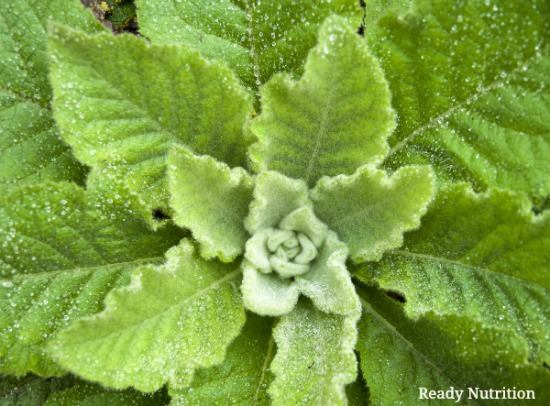via Jeremiah Johnson:

It is available in your better health-food stores and herbal shops. The entire plant can be used: leaves, flowers, and roots. The flowers and leaves are the parts that are valuable for colds and flu. It can be taken as an infusion (a tea), or dried (1 ounce). The leaves can also be placed in an infusion/tea at the amount of about an ounce. You can also simmer them for about 10 minutes in milk. These mixtures can be used for a cough.
The leaves can be smoked in an ordinary pipe for tobacco to provide relief from inflamed membranes of the respiratory system and will control a hacking cough, asthma, and coughs that are spasmodic. The teas provide a demulcent action, and this means a coating action that will soothe the mucous membranes in the manner of a cough drop.
The herb can also be used for diarrhea, as it is a protectant and astringent that will help to clean out the bowels and intestinal tissues. If you crush the leaves and make a poultice out of it (that is simply put, a moistened “packet” of the herb) you can use it on rashes, boils, sores, and other skin ailments. Mullein lives for a good while, and you can always spot it by its stem that grows vertically from which the flowers bud. The seeds can last for more than a hundred years, which makes it excellent for your seed-saving endeavors.
The flowers are a bright yellow color and can be dried for teas. Mullein contains about 3% mucilage, and it is this that helps with the soothing, demulcent qualities on the mucous membranes that line the nose, mouth, and throat. Ready Nutrition Readers, lend me your ears! [para. Shakespeare] Well, you keep the ears…but when they act up? Mullein is also good for ear infections. Many will tell you to tincture it and then apply a few drops. My method: leave some flowers and leaves in a bottle of olive oil, for about 2-3 weeks after chopping the vegetative matter up finely.
After the wait, you’ll have ear “oil” that is both medicinal and also soothing…I’ve found olive oil to be one of the best carrier oils that you can use. When you make a tea from it, or a poultice, ladies, this will help with a yeast infection…and will be a bit more soothing than other remedies due to its demulcent action as mentioned earlier.
A Clemson University study reported back in 2002 that Mullein is effective against several kinds of bacteria, to include Klebsiella pneumoniae, Staphylococcus aureus, Staphylococcus epidermidis, and Escherichia coli. In case you didn’t know it, Staph aureusis the bacteria found predominantly in everyone’s nasal passages. Its use is only contraindicated in young children for coughs, but for ear infections or for an astringent, it can be used with them. You can find it in leaf, tincture, pill, or capsule form, but this information is given to you in the hopes that you’ll go out next season and find it to make your supplies with as well. JJ out!